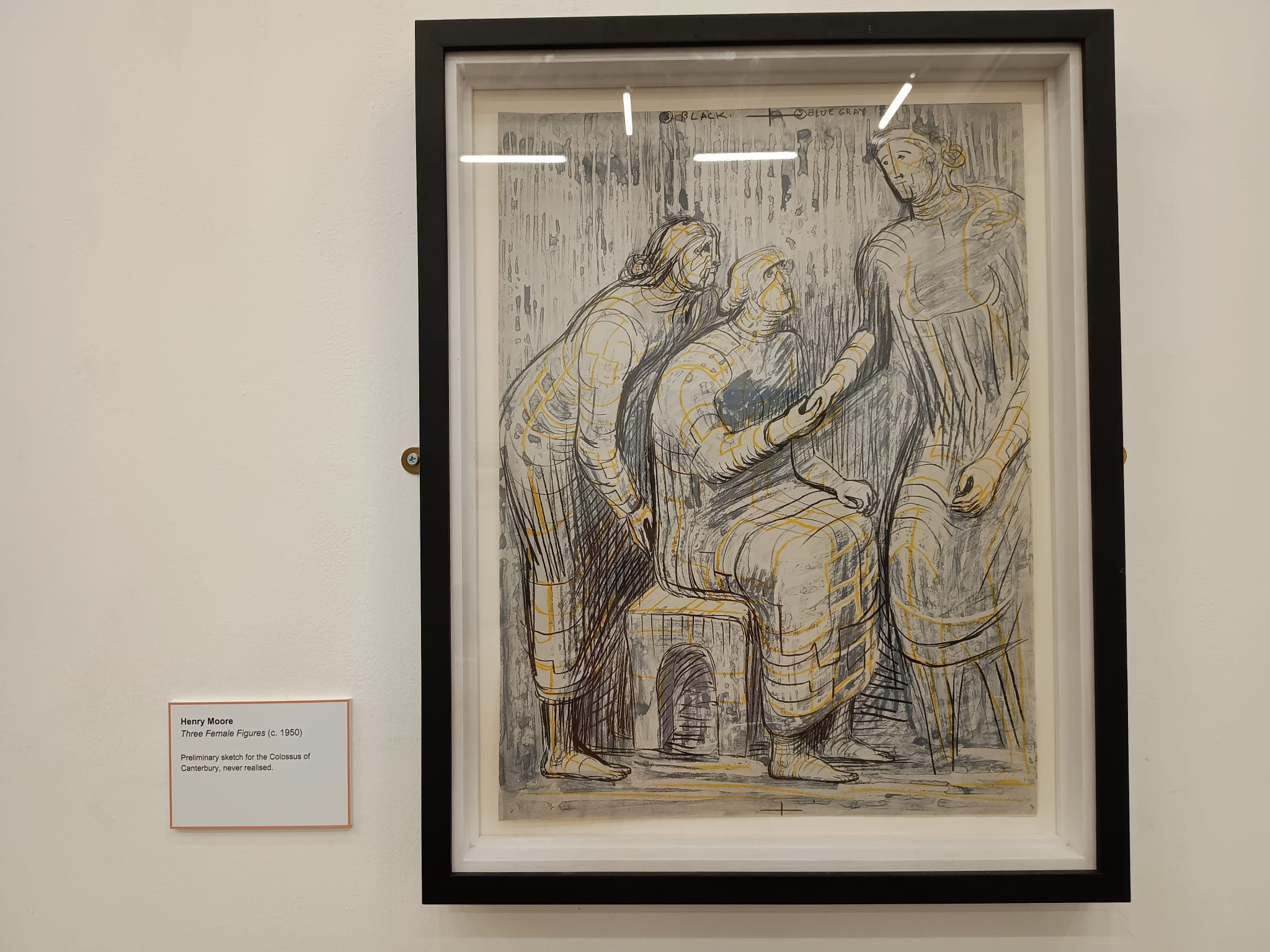Henry Moore moved to Burcroft, Kent just before the second war. Living in a modern bungalow – rather than his previous cottage – he was inspired now more than ever before. Moore described his new garden as encouraging his interest in making sculptures for natural landscapes.

Henry Moore exhibit in The Museum of Imagined Kent, 2024
Drawing for Sculpture: Two Women (1939)
Moore enjoyed the possibilities that printmaking could have on expanding his reach, and so had a printing press installed in his studio at Perry Green after the war. He created quite a few reproductions as exact copies, or facsimiles, of his own original work.

In this exhibition, we have a facsimile of the original work (originally created during Moore’s time in Kent), in which you can really see the layers of vibrant colour and depth to the piece. Interestingly, this facsimile is closer to the work Moore had completed, than the original work itself is today, as the original paints have faded over time… but the facsimile has the original colours intact for all of time…
Three Female Figures (c. 1950)
Inspired by his new garden in Kent, this is a print of one of Moore’s studies for sculpture making. His sculptural style embraced hollows, crevices, and undulating, biomorphic shapes that all complicated the boundary between figuration and abstraction. What are your thoughts on this Colossus of Canterbury (never realised)?

